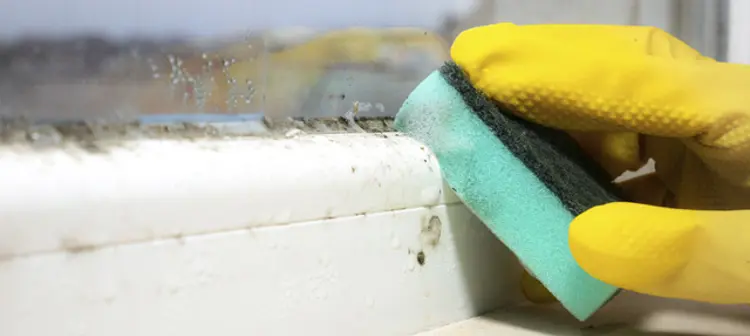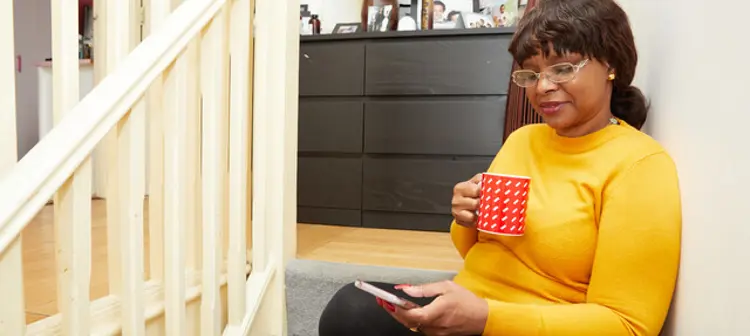Making sure your home is warm, safe and dry
Damp and mould can happen when pipes leak, rain enters your home or when moisture rises from the ground in a basement or ground-floor home.
A build-up of condensation can also lead to damp and mould and forms where moisture settles on surfaces such as windowsills, tiles and walls.
It’s our priority to make sure everyone has a warm, safe and dry home.
If you’re experiencing damp, mould or condensation issues in your home please get in touch with us immediately. We understand how distressing it can be and want to put it right. We have a specialist team in place who can help.
What is damp and mould and where does it come from?
Moisture naturally builds in our homes from daily activities, such as cooking, washing and drying clothes, showering and taking a bath. It starts out as a gas. But when it touches a cooler surface, such as tiles, windows or walls, it condenses and collects as water on these surfaces. This is known as condensation. The water then soaks into wallpaper or plasterwork and over time, black mould can appear on these affected areas.
How you can help manage damp, mould or condensation
Good ventilation:
Condensation is less likely to happen in well-ventilated and warm homes.
- Avoid covering air bricks or ventilation holes and try not to switch off or block extractor fans. If your extractor fan is broken or too noisy, please let us know.
- Always leave a small gap between furniture and the wall to let air flow and try to avoid overfilling wardrobes and cupboards.
- Open windows slightly and make sure your window’s trickle vents (if they have them) are open and not blocked.
- Try running the cold tap before the hot to help reduce moisture.
Reduce moisture:
Managing humidity can help stop damp and mould from growing.
- Always use a lid on pans when cooking to help reduce steam and condensation in your kitchen. It also means you can turn down the heat on your hob, saving energy and money.
- Use an extractor fan if you have one or open a window ideally for 20 minutes after you’ve finished cooking. Remember to close kitchen doors to stop condensation spreading to other rooms.
- If you use a tumble dryer, use a condensing one, or make sure the exhaust vent is installed properly - don’t just hang it out of a window.
- Avoid using radiators to dry clothes as this stops them working well. It can also make your home colder and lead to higher heating costs. Use an airer and where you can, keep the room cool with a window slightly open and the door closed.
Control the temperature in your home:
Having a low background heat is a good way to help cut down on the amount of condensation in your home.
- Use a thermostat to help control your heating and energy bills.
- Make sure you seal your doors and windows properly to help regulate the airflow and temperature in your home.
- Close your blinds or curtains once it gets dark to help keep heat in. Remember to open them again during the day to help the airflow around your windows and doors.

Report damp, mould and condensation
